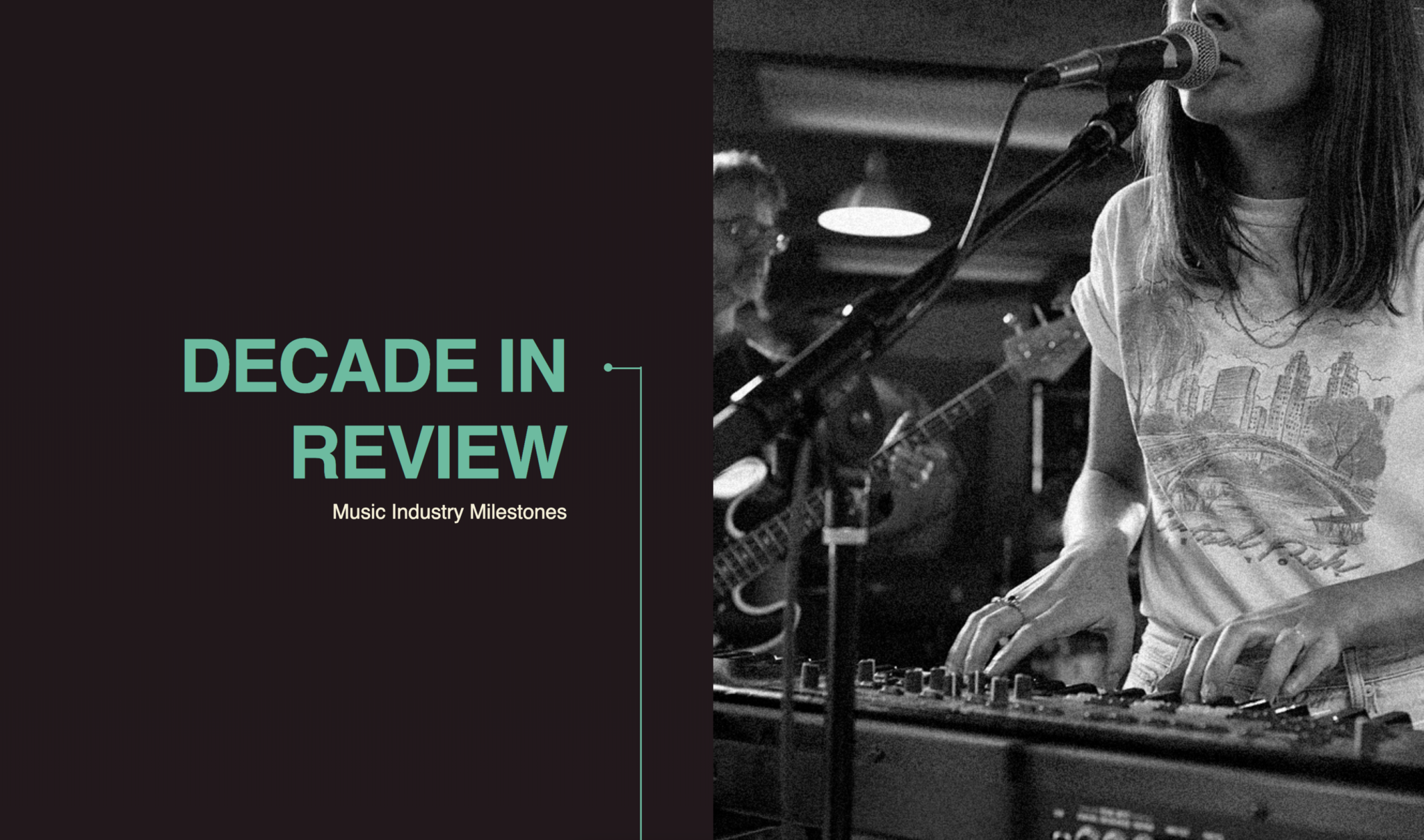
A look back at the decade that was.
Want to see the major developments in the music industry over the past ten years at a glance? We created a timeline infographic for you.
But before we focus specifically on the past decade, it’s important to remember the music industry has rarely been a stranger to change. While the vinyl record dominated for the first 90 years of its existence, the cassette tape finally posed a threat in the 1970s, 10 years after its invention.
Then at the start of the ‘80s a new challenger appeared to not only the cassette, but all analog formats. In 1982, the compact disc ushered in the digital age and the music industry didn’t look back. For two decades, the CD ruled and the record industry boomed, with popular artists pushing millions of units. Artists got rich and major labels got richer. Readers who were part of the CD-buying public in the late ‘90s remember when there was a music store in every mall – usually a chain – selling CDs for upwards of $18 each.
It was around this time that CD Baby formed in a shed in Woodstock, New York, offering independent artists an easy way to sell their CDs online without having to negotiate with major labels or brick and mortar stores.
The MP3 arrives
But the music industry keeps moving, and at the end of the ‘90s the next form of digital music went mainstream. MP3 files were completely digital, stored either on a computer hard drive or on one of the primitive devices invented to play back the new format. The MP3 was the first recorded music format the music industry actively fought against, first shutting down file sharing pioneer Napster and then making an example of individual downloaders by suing them into oblivion.
And if that was the end of the story we’d all still be listening to CDs. For the first few years of the 2000s, “MP3” was an epithet used to summarize all that was wrong with the new millennium: the perceived favoring of quantity over quality and art’s diminished value. But in 2001 Apple launched iTunes, a program designed to organize and play digital audio files. Steve Jobs saw the potential in a small, easily transferable format. He added the iTunes Store in 2003 and stocked it with thousands of major label albums. Apple even tapped CD Baby to help stock iTunes’ library in 2004, a relationship that continues to this day.
So, in moonshiner terms, the MP3 (and its many format offshoots) went legit. The tiny audio format that could went from music industry enemy number one to a compelling alternative to its physical companion the CD. The Download Era had begun.
Dawn of streaming
But that’s still not the end of our story. The inexorable progress of technology brought about a new digital format even easier than downloads. In October 2008, Swedish entrepreneur Daniel Ek launched Spotify, and with it the music streaming revolution.
At the beginning of the 2010s (Teens? Tens?), “streaming” was mostly associated with videos on YouTube and Netflix. By the end of 2019, major companies like Apple, Amazon and Google had launched their own on-demand music streaming services to compete with Spotify, a signal that the format is here to stay.
As you’ll see in this associated infographic timeline, CD Baby has evolved right along with the industry throughout the decade, delivering our artists to any major platform that launches in any territory. And we’ll continue to do so in the roaring ‘20s, whether it be to new streaming services or entirely new methods of music consumption. Whatever new developments the future holds for the music industry in this next decade, we’ll be there.
Join us as we look back at the music industry milestones in the decade that was.